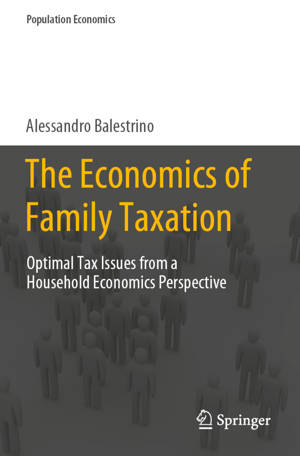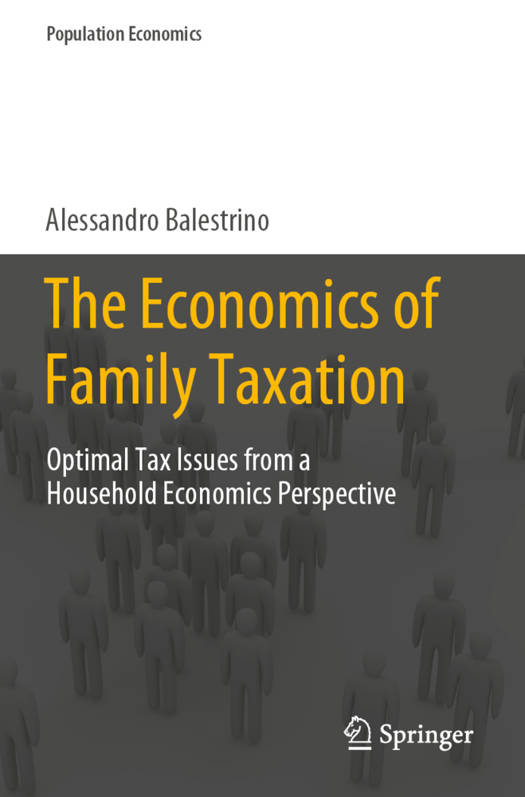
- Afhalen na 1 uur in een winkel met voorraad
- Gratis thuislevering in België vanaf € 30
- Ruim aanbod met 7 miljoen producten
- Afhalen na 1 uur in een winkel met voorraad
- Gratis thuislevering in België vanaf € 30
- Ruim aanbod met 7 miljoen producten
Zoeken
The Economics of Family Taxation
Optimal Tax Issues from a Household Economics Perspective
Alessandro Balestrino
€ 105,45
+ 210 punten
Uitvoering
Omschrijving
This book reflects the reality of most taxpayers. It provides a comprehensive and up-to-date treatment of optimal tax issues from a household economics perspective. A unified and integrated approach is employed to analyze optimal taxation in a homogeneous way.
The author adopts a household production approach to allow a critical understanding of the way tax policy impacts economic agents. This way home activities can be studied with the same toolbox normally employed for the market activities. This is motivated by the fact that in reality most agents act from within a family, and their interaction with the economy at large and tax policy in particular is mediated by the interdependence of the family members' choices, although taxation is typically studied in a framework in which the economic agents are isolated individuals. The aim of the book is to provide, a comprehensive treatment of family taxation whithin this approach, focusing on the normativeside - social welfare maximising taxation.
As a consequence of the book's analysis, many important and established results in public economics may have to be revised. The book will be useful to both graduate students and researchers alike in that it adopts a rigorous analytical language but also includes ample intuitive explanations.
The author adopts a household production approach to allow a critical understanding of the way tax policy impacts economic agents. This way home activities can be studied with the same toolbox normally employed for the market activities. This is motivated by the fact that in reality most agents act from within a family, and their interaction with the economy at large and tax policy in particular is mediated by the interdependence of the family members' choices, although taxation is typically studied in a framework in which the economic agents are isolated individuals. The aim of the book is to provide, a comprehensive treatment of family taxation whithin this approach, focusing on the normativeside - social welfare maximising taxation.
As a consequence of the book's analysis, many important and established results in public economics may have to be revised. The book will be useful to both graduate students and researchers alike in that it adopts a rigorous analytical language but also includes ample intuitive explanations.
Specificaties
Betrokkenen
- Auteur(s):
- Uitgeverij:
Inhoud
- Aantal bladzijden:
- 102
- Taal:
- Engels
- Reeks:
Eigenschappen
- Productcode (EAN):
- 9783031281723
- Verschijningsdatum:
- 28/04/2024
- Uitvoering:
- Paperback
- Formaat:
- Trade paperback (VS)
- Afmetingen:
- 155 mm x 235 mm
- Gewicht:
- 190 g

Alleen bij Standaard Boekhandel
+ 210 punten op je klantenkaart van Standaard Boekhandel
Beoordelingen
We publiceren alleen reviews die voldoen aan de voorwaarden voor reviews. Bekijk onze voorwaarden voor reviews.











